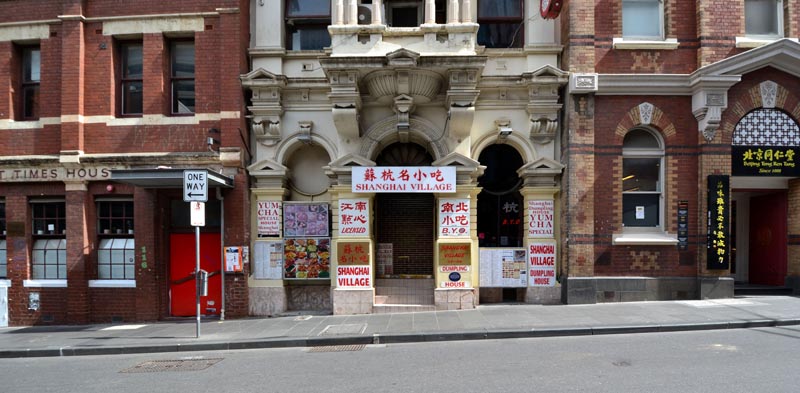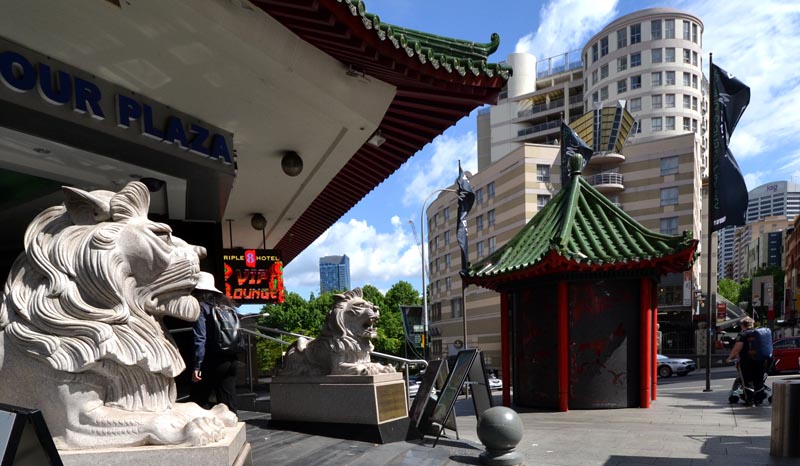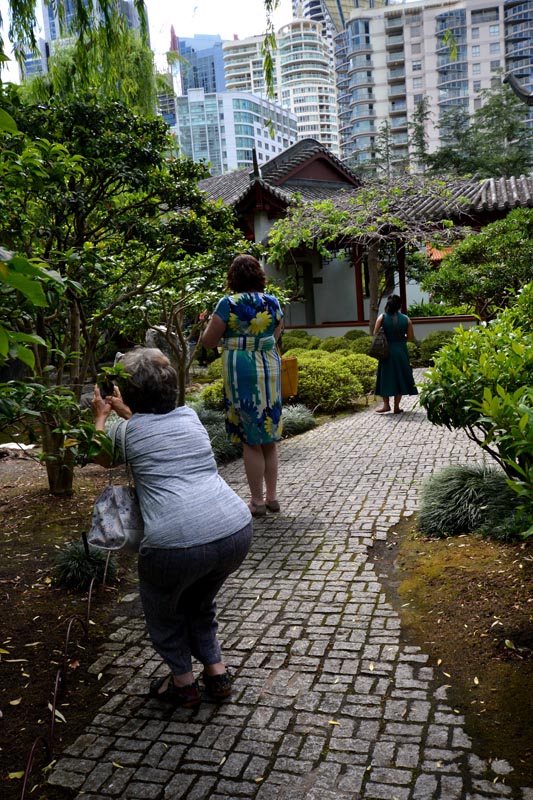-
Membership
Membership
Anyone with an interest in the history of the built environment is welcome to join the Society of Architectural Historians -
Conferences
Conferences
SAH Annual International Conferences bring members together for scholarly exchange and networking -
Publications
Publications
Through print and digital publications, SAH documents the history of the built environment and disseminates scholarship -
Programs
Programs
SAH promotes meaningful engagement with the history of the built environment through its programs -
Jobs & Opportunities
Jobs & Opportunities
SAH provides resources, fellowships, and grants to help further your career and professional life -
Support
Support
We invite you to support the educational mission of SAH by making a gift, becoming a member, or volunteering -
About
About
SAH promotes the study, interpretation, and conservation of the built environment worldwide for the benefit of all
Australia's Unsettled Settlers
Aymar Mariño-Maza is the 2018 recipient of the H. Allen Brooks Travelling Fellowship. All photographs are by the author, except where otherwise specified.

Figure 1: Stuart Highway
Out Back
One of the first things I learned about Australia is that the Outback isn’t an actual place. The Outback is that mythical, terrifying, and beautiful “place” that most of us non-Australians imagine either as a scene out of Mad Max or as a live-action Crocodile Dundee. Saying you are going to the Outback is kind of like saying you are going to Europe as opposed to, say, Prague. The Outback is not a homogeneous, easily identifiable place but rather a vast, variegated space—seemingly endless once you are in it and filled with mysteries we could not begin to grasp. Its vastness is daunting, especially because it is largely uninhabited.
When I crossed from Melbourne to Darwin along Stuart Highway, I was able to get a glimpse into a single strip of that vastness, a single strand of the mysteries it holds. Stuart Highway suddenly became an architectural section cutting across so many other lines, most of which were invisible to me but which mark the ground all across Australia. I am alluding to the Songlines, of course, but also to historical paths in general, paths that cut across the country but which have been lost to the collective memory of humanity. What westerners call the Songlines are actually called “the Footprints of the Ancestors” by the various indigenous peoples of Australia.1 The Songlines are a network of pathways that cross Australia, linking natural monuments—the totems of these mythical ancestors. The term also refers to the ritual walks along these pathways, those which bind the walker to the ground and to the myths rooted within it. The walker follows in the Footprints of the Ancestors, celebrating and constantly reliving history.

Figure 2: Stuart Highway
Learning about the Songlines, one begins to appreciate the way these groups have found a way to keep history alive. It is somehow reminiscent of what Aldo Rossi called permanent urban artifacts. Rossi distinguished between two types of permanence in urban artifacts: historical (those which continue to function and which we continue to experience) and pathological (which stand aberrant and static within society).2 But Rossi was writing from a narrowly western perspective, where the notion of history was as of yet unperturbed by such thinkers as Foucault. (Reading any of his works will effectively kill whatever respect you used to have of history in the traditional sense). The Songlines blur the distinction between Rossi’s two forms of permanence because history is not as cleanly parceled out in the collective imagination of these people. History is part and parcel of the lived experience. One can’t compare the Songlines to a tour of historical monuments or to a reenactment of a historical event because the people who believe, live, and celebrate the Songlines do not see their walks as distinct from the mythological past; they are not “reliving” the past in the same way that a Civil War reenactor does.
It makes one wonder about the innumerable historical paths that mark our world (no, not just physically) and those that have been lost to our collective memory. There is an Australian myth that the country has “little history.” This remote country with so much open, uninhabited land could easily give the impression of having little history—it was an egalitarian society of pioneers, colonized not so long ago. But the seemingly barren land that stretches as far as the eye can see is hiding a network of histories that weave over and across each other. We will try to unravel one of them here.

Figure 3: Facing Heaven Archway, a Sister State gift from Jiangsu Province, Melbourne
From Gold to White Australia
The Gold Rush swept across Australia in the 1800s. Waves of temporary workers from China followed in its golden wake. These men left families behind, sailed to Australia, and then found themselves moving around the red-earthen country to follow the gold. They usually lived near and around whatever site they were mining, camped out in tents and generating the workings of a small temporary town. It was economically impossible for the majority of these workers to bring their families along with them, due in part to the cost of the journey but also to the payment that was required to mine the land. As a result, these campsites were filled with single men.
By the time the Gold Rush died down, most of the temporary workers returned to their countries of origin. A few remained, usually congregating in larger cities such as Sydney and Melbourne. Small ethnic enclaves formed within these cities, spaces which have now evolved into Chinatowns with distinct character that sets them starkly apart from the surrounding urban space.

Figure 4: Former Sum Kum Lee building in Chinatown, Melbourne
But what is it that sets these spaces apart? Architecturally, one would be hard-pressed to find anything traditionally or even distinctly “Chinese” in Melbourne’s Chinatown buildings. A few distinct elements stand out: a couple dragons framing the corner of a building, the gateways that break up Little Bourne Street, and the Facing Heaven Archway. All of these elements, however, were twentieth-century additions to the urban fabric, which in and of itself is not actually any different from the streets surrounding Chinatown. I’d go as far as to say that the truly distinctly Chinese part of the street is the stuff that fills it: the signs, the food, and the goods.

Figure 5: Chinatown, Melbourne

Figure 6: Chinatown Gateways, Melbourne (built in 1976)
Australia’s image as a settler-society is partly mythical. Many of the people that have filled (or attempted to fill) this vast country were not settlers but temporary workers whose prospects of staying were thwarted by a historical policy of racial exclusion. By 1901, the Immigration Restriction Act banned further migration into Australia. Over the next several decades, a set of not-so-subtle regulations known as the White Australia policy thwarted non-European migration into Australia. Although the Migration Act 1958 abolished regulations aimed at keeping non-whites out of Australia, it was only in 1973 that the full extent of the White Australia policy was dismantled.3 Since then, migration from China and Pacific Islands has increased substantially. Nowadays, the effects of that migration can be easily seen in cities such as Melbourne and Darwin, where a vibrant multiculturalism is an intrinsic aspect of these spaces.
Melbourne’s Chinatown, for example, had once been small and contained within a couple square blocks but now spills out into neighboring streets that are not officially declared part of “Chinatown.” The edges of that space are blurred, much like the distinctions between the different people that inhabit the city. But of course, it’s not all sunshine and butterflies. Even though places such as the Immigration Museum might advertise a new age of Australian multiculturalism, many writers on the topic still bring attention to the persistent racism and anti-Asian sentiment that marks Australian culture.4

Figure 7: View from the entrance of Chinatown in Sydney
Housing John Chinaman
Who’s telling the story? Anyone who has had a good literature teacher knows that’s the question to ask. Can I trust this narrator? Jean Baudrillard throws that question in the reader’s face when he opens his book Simulacra and Simulation with a quote he attributes to Ecclesiastes: “The simulacrum is never what hides the truth—it is truth that hides the fact that there is none. The simulacrum is true.”5 Harmless on first read—except, of course, for those who have studied the Bible. There is no such line in Ecclesiastes. Baudrillard made it up.
It is now one of the most famous misquotes in literary history. A beautifully executed piece of writerly critique and a perfect crash course into the subject of simulacrum. The message is clear: dear reader, you can be fooled. No, let me rephrase that. Dear reader, you are always, every day, from the moment you are born until the moment you die, being fooled. A question to ask, once we’ve processed this call for critical thinking, is: does knowing he is the author change the significance of what we read in that line? In other words, does it take away its validity? And does it turn the line into a lie—or something else maybe? Baudrillard, in writing that quote and getting you to believe it was really written in Ecclesiastes, created a simulacrum: not a lie exactly, but a new reality, one that exists (bear with me) only as an image of reality, i.e., not the line as an actual verifiable quote in the Bible, but as the image of a quote whose legitimacy the reader has taken for granted and simply accepted. Our duty as critical thinkers is to fact check everything while also accepting the inevitable truth that we will never escape the simulacrum that surrounds us.

Figure 8: Mural at the entrance of Golden Dragon Museum, the Chinese Garden, in Bendigo
In 1927, J. A. Makepeace translated and published a collection of letters written by Hwuy Ung titled “A Chinaman's Opinion of Us and of His Own Country.” In these letters, Ung describes the culture in Australia from the eyes of someone seemingly transported not from another place, but from another time. Noting such things as the audacity of women and the strangeness of the attire, Ung seems to epitomize a traditional and markedly un-western Chinese perspective.
It just so happens that Makepeace was not the translator but the author of the letters. This is an extreme example of a much larger problem. The image of Chinese Australians has been historically seen through the eyes of the white Australian narrator as opposed to the Chinese immigrant’s own perspective. As a result, the image generated of this group within Australian society has been largely misrepresented, from the image of the first temporary workers to the social culture that existed in predominantly Chinese neighborhoods.
This stereotype is in and of itself problematic, but it’s also problematic because this image feeds on itself, fattening a derivative reality wherein the Chinese Australian experience is only understood through the lens of this simulation. As Baudrillard puts it, “There is no crisis of reality. Far from it. There will always be more reality, because it is produced and reproduced by simulation, and is itself merely a model of simulation. The proliferation of reality, its spreading like an animal species whose natural predators have been eliminated, is our true catastrophe.”6 This catastrophe is repeated across the historic landscape of humanity’s depiction of “the other” because we can’t help but see the objects, places, and people around us through this proliferation of a reality of our own making.

Figure 9: Chinese Museum in Bendigo
Now, let’s do a quick recap. I’ve just brought in Baudrillard into a conversation supposedly about architectural history. I have proceeded to do an inadequate job of distilling some pretty complicated philosophical ideas and then have unapologetically appropriated them for the sake of a fairly shaky argument. I’ve done exactly what Baudrillard’s writing critiques. Not only that, but I have also critiqued a historical narrative for being biased and incorrect while I, a white Spanish-American, am writing about Chinese Australians. Yes, dear reader, I am aware of the irony.

Figure 10: Penjing collection at the Chinese Garden of Friendship in Sydney (built in 1988)
Walking through the Chinese Garden of Friendship in Sydney, I was impacted by the sharp contrast I saw between the space itself and the city that surrounded it. Opened in 1988 as a commemorative monument to the friendship between the sister cities of Sydney and Guangdong in Southern China, it is a series of interconnected pavilions in a beautiful and peaceful garden. It was clearly designed as a respite from the rest of the city. And yet, everywhere I looked, I found myself confronted with views of Sydney skyscrapers in the background of the perfectly curated space. Almost instinctively, I was reminded of the Makepeace text, where his fictional Chinese character sees the contemporary western world of Australia from the “traditional” Chinese perspective (whatever that is). I couldn’t help but flip the story and apply it to myself. I became the foreign viewer, seeing this space and the image it presented through the ever-visible frame of the world from which I came.
Fun fact for the movie lovers out there: Baudrillard’s ideas influenced the 1999 film The Matrix. Like any good sci-fi story, the film had very real and transparent commentary on the contemporary society of the audience watching it. Similarly, I’d say that this text isn’t just about “the other.” But I leave it to the readers to decide how much of this text applies to their own lives.

Figure 11: Chinese Garden of Friendship in Sydney (built in 1988)



Leave a commentOrder by
Newest on top Oldest on top